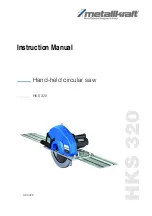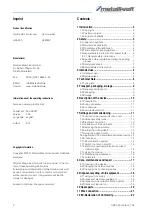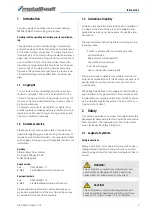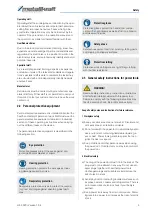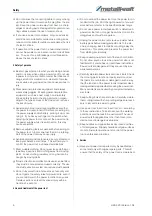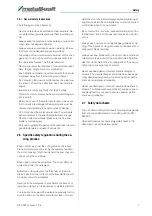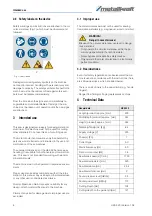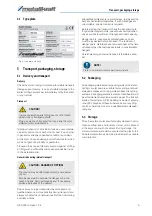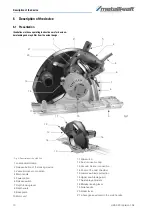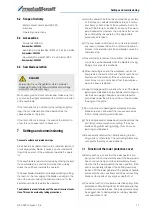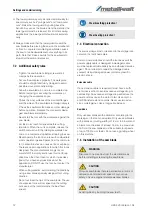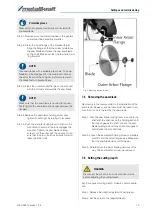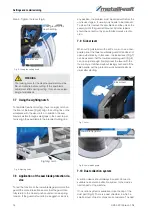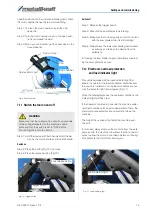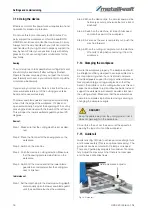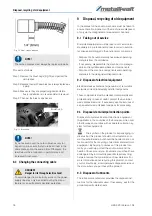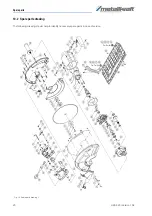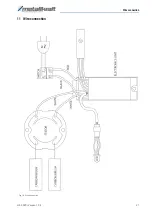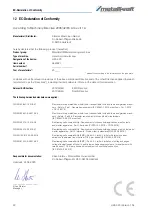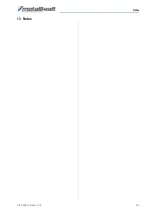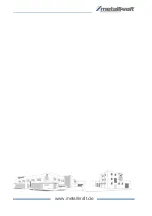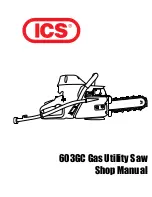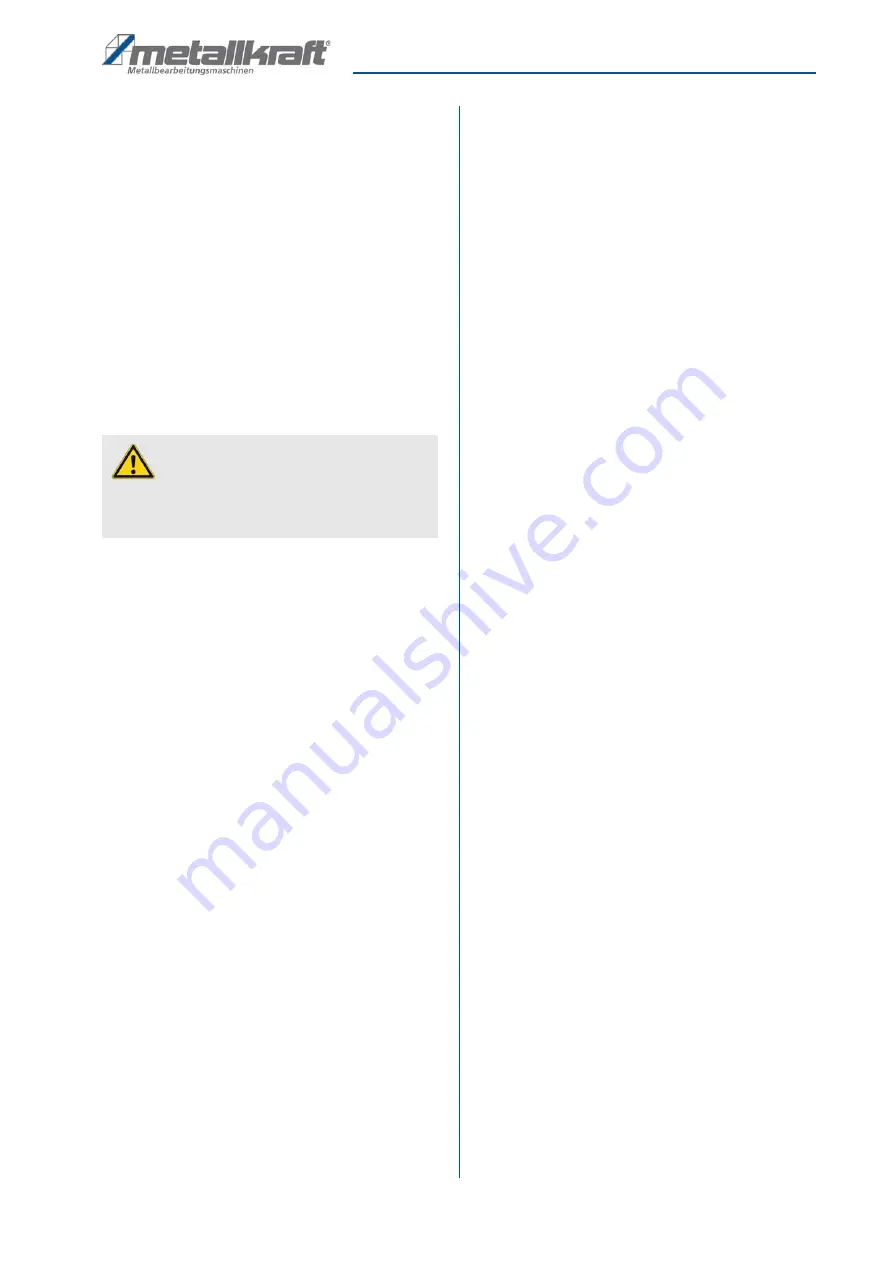
Settings and commissioning
HKS 320 | Version 1.04
11
6.2 Scope of delivery
- Metal circular hand saw HKS 230
- Allen key
- Operating instructions
6.3 Accessories
- Guide rail 1400 mm
Item number: 3850030
- Saw blade for stainless steel Ø 320 x 2,2 x 25,4 mm Z84
Item number: 3853203
- Saw blade for steel Ø 320 x 2,2 x 25,4 mm Z80
Item number: 3853204
6.4 Saw blade selection
When sawing with a metal circular saw, make sure that
you choose the right saw blade or the correct tooth pitch
of the saw blade.
If the tooth pitch is too small and the cutting length too
long, the cut material cannot be absorbed by the
spaces between the teeth.
If the tooth pitch is too large, the saw tooth will start to
chop; this can cause teeth to break out.
7 Settings and commissioning
Causes of a setback and related warnings
A kickback is a sudden reaction to a jammed, jammed
or misaligned saw blade. It causes an uncontrolled lif-
ting of the saw out of the workpiece towards the opera-
tor.
If the saw blade is jammed or tied up by closing the kerf,
the saw blade stops and the motor reaction quickly
drives the unit back towards the operator.
If the saw blade is twisted or misaligned during cutting,
the teeth on the rear edge of the blade can dig into the
top of the wood, causing the blade to climb out of the
kerf and jump back towards the operator.
The kickback is a result of misuse of the saw or incorrect condi-
tions. This can be avoided by taking precautions.
a) Hold the saw with both hands and position your arms
so that they can withstand kickback forces. Position
your body on both sides of the saw blade, but not in
line with the blade. A kickback can cause the saw to
jump backwards. However, the kick-back forces can
be controlled by the operator if the appropriate
precautions are taken.
b) If the saw blade is jammed or if a cut is interrupted for
any reason, release the switch and hold the saw mo-
tionless in the material until the saw blade comes to a
complete stop.
c) Never attempt to remove the saw from the workpiece
or pull the saw backwards while the blade is moving.
Doing so may result in kickback.
d) When restarting a saw in the workpiece, centre the
saw blade in the kerf and check that the teeth do not
interfere with the material. If the saw blade is jam-
med, it may run up or kick back from the workpiece
when the saw is restarted.
e) Support large panels to minimise the risk of the blade
jamming and kickback. Large panels tend to sag un-
der their own weight. Supports must be placed on
both sides under the plate near the cut line and near
the edge of the plate.
f) Do not use blunt or damaged saw blades. Dull saw
blades create a narrow kerf that causes excessive
friction, blade jamming and kickback.
g) The locking levers for blade depth and bevel must be
set firmly and securely before cutting. If the saw
blade setting shifts during cutting, this can cause
jamming and kickback.
h) Be especially careful when blindly sawing into exi-
sting walls or other areas. The protruding blade may
cut objects that may cause kickback.
7.1 Function of the lower protective cover
a) Before each use, check that the lower guard is pro-
perly closed. Do not operate the saw if the lower guard
does not move freely and close immediately. Never
clamp or tie the lower guard in the open position. If the
saw is accidentally dropped, the bottom guard may
be bent. Lift the lower guard with the pull-back handle
and ensure that it moves freely and does not touch the
blade or other parts at any angle or depth of cut.
b) Check the function of the lower protection spring. If the
protection and the spring do not function properly, they
must be serviced before use. The lower protection may
be sluggish due to damaged parts, rubbery deposits
or accumulation of dirt.
DANGER!
Verwenden Sie nur Sägeblätter, deren maximal
zulässige Drehzahl der Maximaldrehzahl der Säge
entspricht oder darüber liegt.

